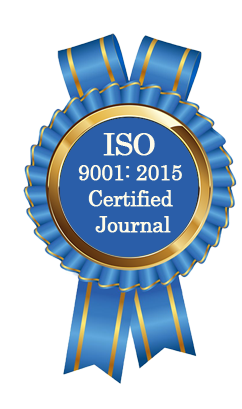| All | Since 2020 | |
| Citation | 105 | 60 |
| h-index | 4 | 4 |
| i10-index | 3 | 2 |
WJAHR Citation 
Login
News & Updation
Best Article Awards
World Journal of Advance Healthcare Research (WJAHR) is giving Best Article Award in every Issue for Best Article and Issue Certificate of Appreciation to the Authors to promote research activity of scholar.
Best Article of current issue
Download Article : Click here
Indexing
Abstract
FREQUENCY OF LUMBOSACRAL RADICULOPATHY SYMPTOMS AND SIGNS IN PATIENTS PRESENTING WITH MECHANICAL LOW BACK PAIN IN MOSUL CITY A CROSS-SECTIONAL STUDY
*Dr. Mohammed Esmael Khaleel and Dr. Amina Wameedh Ramzi
ABSTRACT
Background: Low back pain refers to pain in the area between the lower rib cage and gluteal folds with 90% of cases being mechanical in nature. lumbosacral radiculopathy is defined as a condition in which the disease process behind the mechanical low back pain affects the function of one or more of the lumbosacral nerve roots leading to dysfunction of two distinct systems: motor and sensory or a combination of both. The lifetime prevalence of low back pain is estimated to be between 60% to 90%, while the incidence of radicular symptoms in patients presenting with low back pain ranges from 12% to 40%, actual lumbosacral radiculopathy lifetime prevalence among adults is found to be not exceeding 3% to 5% according to most reports with equal rates between males and females. It is for the importance of this condition with its relatively notable prevalence, significant outcome on patients’ quality of life and in addition to lack of recent such studies on the topic in our city that this study is planned. Aim of the study: to estimate the prevalence of radiculopathy symptoms and signs among mechanical low back pain patients in Mosul city. Methods: A descriptive cross sectional study is conducted from March 2023 till end of July 2023 on mechanical low back pain patients who were attending rheumatology consultation units in Ibn Senna and Mosul General Hospitals in Mosul city. A non-randomized convenient sample of 350 patients were collected. Including all adult patients with mechanical low back pain and excluding patients who were younger than 18 years and patients with low back pain that was not mechanical in nature. The data was collected by clinical examination performed by the researcher and rheumatology senior followed by a questionnaire filling. The data then was analyzed statistically by the use of Microsoft Excel and SPSS ver25. Results: As for epidemiological data obtained from participants in this study; radicular pain was reported in 72% of study population. women had a higher prevalence of radicular pain than men (78% of women as compared to 64% of men in the study population). Radicular pain is found in 79% of cases of middle age group (40-59 years). The next group in prevalence was in elderly group being 74%. While the least in prevalence is young adult group (18-39 years) with about 64%. In this study, the two main risk factors were multiple pregnancy and a previous history of back pain. It is also found that radicular pain (sciatica) was mostly prevalent in patients presenting with pain duration that exceeded 12 weeks (chronic cases) as it was estimated to be about 82%. Followed by subacute cases where the prevalence was 73% and finally, acute cases had a prevalence of 63%. When sciatica prevalence is estimated using patients who have radicular pain in addition to a positive neurological test, the figure would be 45% of study population. This figure represents patients who can be diagnosed as actually having radiculopathy (sciatica). Conclusion: The prevalence of sciatica (diagnosed clinically as typical radiating pain in addition to one or more positive neurological maneuver) was 45% of the cases which is noticeably higher than the figures estimated in epidemiological studies which range between 3-5%. Radiculopathy has also been more prevalent in females as compared to males. The most prevalent risk factors for radiculopathy found in patients complaining of radicular pain in the study population were multiple pregnancies and a previous history of back pain. Radicular pain is more prevalent in middle aged group, followed by elderly age group and lastly by young adults. Also Prevalence of radiculopathy symptoms is more prominent in chronic cases when compared to acute cases.
[Full Text Article] [Download Certificate]
